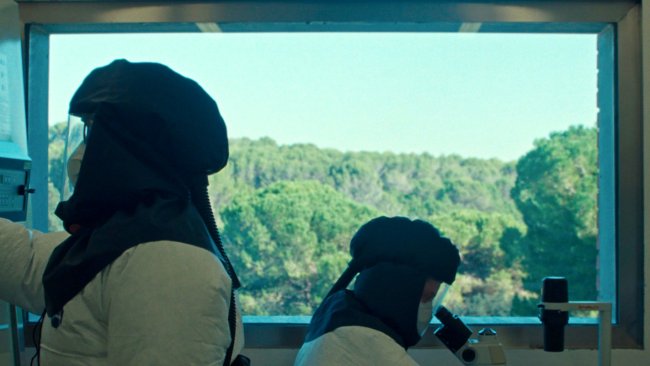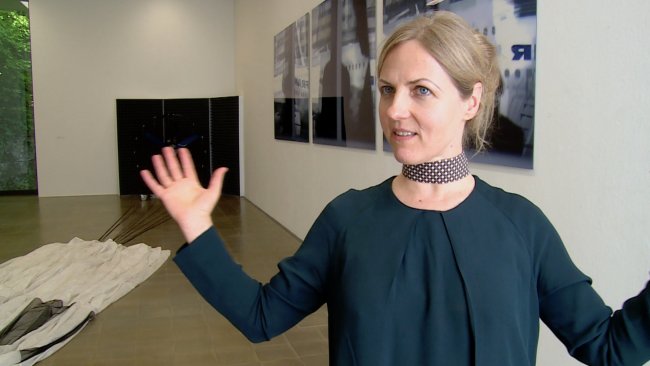The Twentieth Century
[…] The vintage feel is extremely well rendered, and is further emphasised by the astonishingly made chiaroscuros and the static camera work, which is here mostly represented by close ups and middle shots, accurately mimicking the technical limitations of early cinema.
[…] The ensemble of actors and their acting work are closer to those of a stage play, as their masks and voices serve the purpose of representing an idea (or an archetype, at best) rather than a historical character or even a real human being.
Text: Davide Abbatescianni

Winnipeg-born experimental filmmaker Matthew Rankin’s feature-length debut is a crazy epic dramedy entitled The Twentieth Century, world-premiered at the 2019 Toronto International Film Festival in the Midnight Madness section and selected by this year’s Neuchâtel International Fantastic Film Festival. As explicitly stated in the opening credits, the film follows William Lyon Mackenzie King’s «destiny to become Prime Minister of Canada» and his «obsessions and bewilderment recorded in the young politician’s diary, at the dawn of an extreme age». However, Rankin’s intentions are far from providing the viewers with a historical account of the statesman’s rise to power, as he deliberately mixes real events with fantastic (and heavily distorted) variables.
The first scene immediately sets up the tone and the style of the entire movie. Mackenzie King (played by actor Dan Beirne) has a sappy, surreal dialogue with a sick child, called Charlotte (young Satine Scarlett Montaz), lying on a bed in a hospital for defective children in 1899’s Toronto. During their exchange, the man gifts her a cockade and promises her that, once he becomes Prime Minister, he will make tuberculosis against the law. The sound of their voices is expertly muffled, the pictures looks grainy and printed on film, and the colours do not look authentic, but rather added as an effect of the old-fashioned practice of colourisation. The vintage feel is extremely well rendered, and is further emphasised by the astonishingly made chiaroscuros and the static camera work (courtesy of DoP Vincent Biron), which is here mostly represented by close ups and middle shots (several long shots will also appear at a later stage), accurately mimicking the technical limitations of early cinema. Moreover, the acting of the two characters is over the top and emphatic.
These are the main filmic grammar rules of The Twentieth Century; the epic of Mackenzie King is recounted through ten distinct chapters, during which the man’s rise to power is portrayed in the most foolish of ways. Mackenzie King initially falls in love with Lord Minto’s daughter, Ruby Elliott (Catherine St-Laurent), but his political campaign is to fail and events take an unexpected turn. The movie combines aesthetic elements (and clichés) from a number of genres, though the most iconic and recognisable are German Expressionist films, melodramas, wartime propaganda newsreels from the 1930s and 1940s, as well as erotic flicks and splatter B-movies. While this hodgepodge of styles may have severely affected the final result, bringing chaos to the narration and the entire viewing experience, Rankin manages to skilfully blend them together and remarkably achieves both satirical and comedic intents.
A clear example of said duality is the «test of leadership» scene, where all of the potential candidates for the Prime Minister’s post test each other in a series of silly challenges such as “waiting your turn”, “leg wrestling”, “ribbon cutting”, “butter churning” and “endurance tickling”, among others. The parodic purposes are further highlighted by the employment of cross-gender acting (for example, Louis Negin plays Mackenzie King’s mother) and colour-blind casting (Asian-Canadian thesp Mikhaïl Ahooja plays Henry Albert Harper, who was a White civil servant and here is imaginatively portrayed as the lead character’s fierce rival). The ensemble of actors and their acting work are closer to those of a stage play, as their masks and voices serve the purpose of representing an idea (or an archetype, at best) rather than a historical character or even a real human being. In this respect, the setting of the final sequence seems to make this concept even more evident, as the scenery clearly resembles that of a puppet theatre.
All in all, Rankin’s The Twentieth Century is an interesting piece, rich in great nonsense and a precious “clever stupidity” that makes it worth watching and, at times, recalls Monty Python’s humour. Despite its estranging setting (and characters), the vicissitudes of Mackenzie King are easy to follow and the pace of the narration remains fast throughout the film. In this sense, the ten-chapter structure imposed by Ranking re-establishes order and makes its fruition smoother.
This article contains a third-party video. If you would like to watch the video, please adjust your settings.
Watch
Screenings in September 2020 at Cinéma Bellevaux Lausanne
Info
The Twentieth Century | Film | Matthew Rankin | CAN 2019 | 90’ | NIFFF 2020
First published: July 14, 2020



